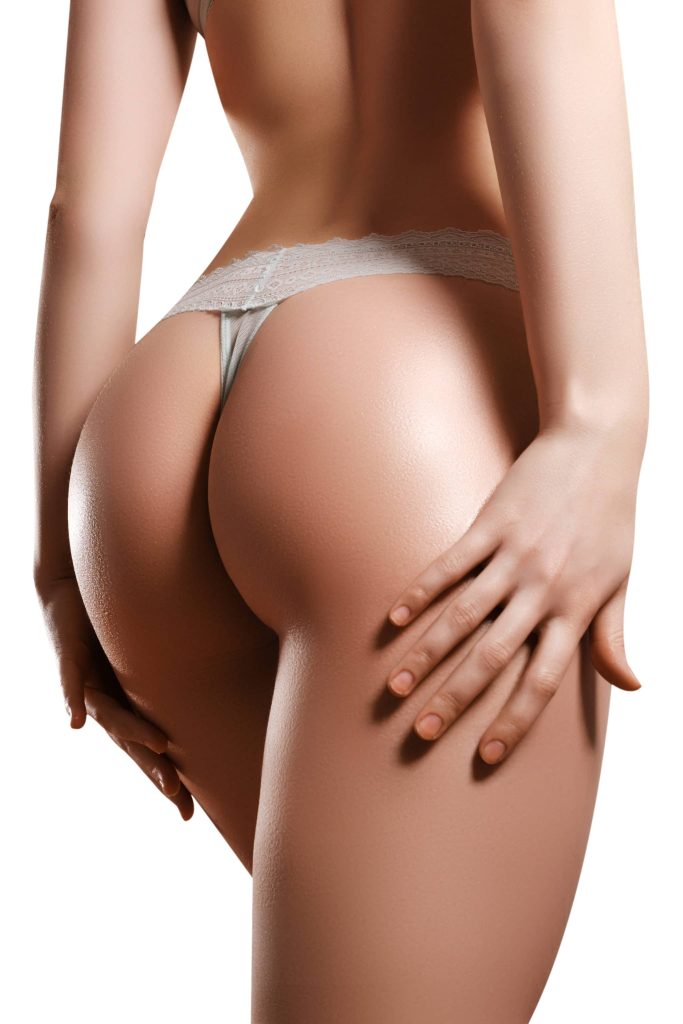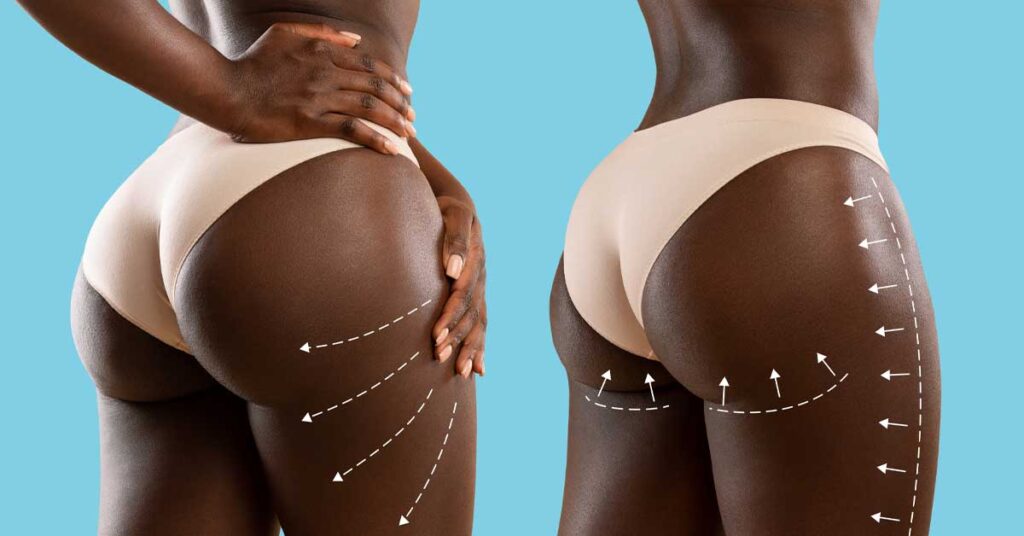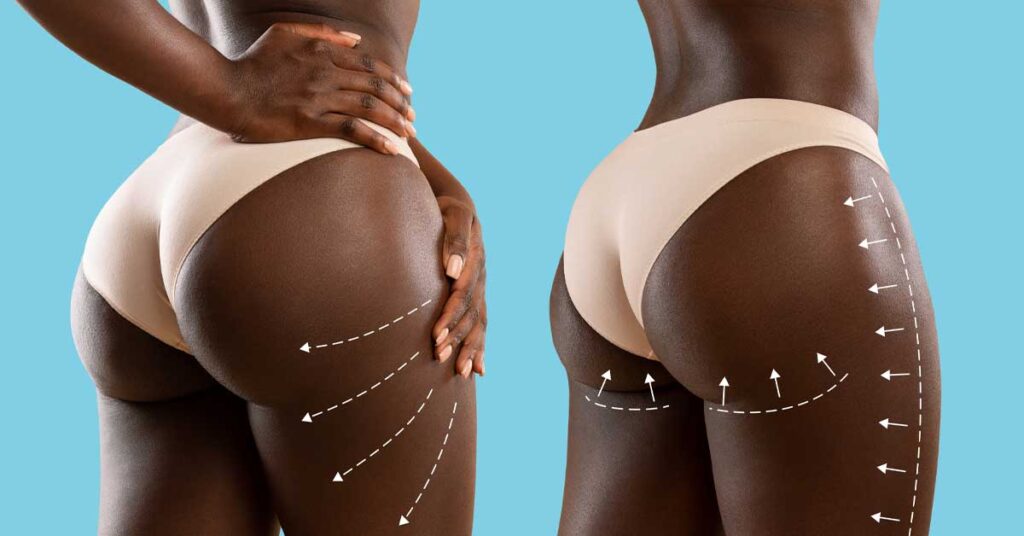Key Takeaways
-
Liposuction and fat transfer work together to sculpt the body by removing unwanted fat and enhancing areas needing volume for a balanced, natural look.
-
Because the patient’s own fat is used for fat transfer, the results are incredibly natural looking. It’s less wasteful and lessens the use of synthetic fillers.
-
Performing both procedures in a single session saves time, shortens the recovery time, and lessens the need for future surgeries.
-
This comprehensive approach improves body proportions while restoring volume that’s been lost to aging or genetics, producing a more balanced overall appearance.
-
Ideal candidates are healthy individuals who are close to their ideal weight. They need to have sufficient excess fat for both removal and transfer.
-
Overall, long-term results rely heavily on an individual’s lifestyle, such as keeping a balanced weight and a commitment to regular exercise and healthy eating habits.
The combination of liposuction and fat transfer provides an effective, convenient means of improving body contours with just one procedure. Liposuction removes unwanted fat from areas like the abdomen, thighs, or arms, while fat transfer uses that same fat to add volume where needed, such as the hips or buttocks.
This combined technique allows you to obtain a more proportionate figure, without the use of artificial fillers. Ultimately, the procedure is customized based on personal goals, providing sculpted results that look natural and authentic.
Since the procedure uses your body’s own fat, it reduces risks while producing long-term results. For optimized, natural looking results in the quickest time possible, this is the method for you. It’s the perfect solution to tackle both of those concerns in one fell swoop.
What Is Liposuction And Fat Transfer
Liposuction and the lipo fat transfer procedure are two highly recognized, advanced techniques in aesthetic medicine to shape and contour the body. Combined, they deliver a smooth, natural-looking contour to your shape, with long-lasting results and little visible scarring.
What Is Liposuction
Liposuction is a popular cosmetic surgery procedure used to remove excess fat from specific areas of the body, making it an effective weight loss solution for those stubborn areas that won’t budge with diet and exercise. This fat transfer procedure is a game-changer for sculpting regions like the abdomen, thighs, and arms.
Numerous techniques exist for fat removal, including tumescent liposuction, which employs an injectable saline solution for smoother fat removal. Additionally, laser-assisted liposuction techniques work to melt fat, facilitating simpler removal. These advanced fat transfer procedures allow for minimal invasiveness, efficiency, and a significantly shorter recovery time.
With the ability to precisely target stubborn fat deposits for improved body contours, liposuction offers a proven solution for body contouring and achieving your dream body.
What Is Fat Transfer
Fat transfer, known as autologous fat grafting, uses the fat that was removed during liposuction to reinject into areas of the body to create more volume. Natural-looking results using your body’s own fat eliminates the risk of rejection while providing the most natural-looking results.
Common areas include the face, for smoother skin or fuller cheeks, and the buttocks, as seen in Brazilian Butt Lift (BBL) procedures. This combined method improves the harmony of your entire figure, adding to your desirable shape.
How These Procedures Work Together
Liposuction and fat transfer are the perfect pairs. Liposuction is the most effective cosmetic procedure to remove unwanted fat. During fat transfer, the same fat is used to augment areas such as the buttocks or breasts.
By combining these procedures into a single session, surgery time and recovery are minimized, providing an all-in-one solution for body sculpting. At BeautyLand Plastic Surgery, using this method creates the best symmetry and the most long-lasting results that most of our patients are happy with for decades.
Benefits Of Combining Liposuction And Fat Transfer
Achieve A Sculpted And Natural Look
No matter the procedure, using your own fat to make these improvements creates a smooth, natural look and feel. This method produces outcomes that naturally integrate with your body’s distinctive framework. You will no longer need to fear the fake look that some implants are able to create.
Fat transfer is a versatile procedure that has a lot to offer. It can help improve the shape and fullness of your buttocks, add smoothness to your face and restore youthful-looking hands. The natural-looking results flatter your figure while restoring your confidence.
You will be more confident and pleased with the shape and appearance of your body! Patients love the premium aesthetic and transformation this procedure provides to their entire body while still respecting the natural, proportionate, authentic presentation.

Enhance Body Contours And Proportions
This dual-action method is perfect for body sculpting treatments, creating a delicate balance in your physique. The fat transfer procedure utilizes liposuction techniques to remove fat from areas such as the abdomen or thighs. It then transfers that fat to enhance curves and develop an hourglass shape, complementing your figure.
In addition to contouring, fat transfer surgery is an effective way to restore lost volume to areas like the breasts or face, resulting in improved symmetry. Every cosmetic surgery procedure is designed around individual objectives, ensuring a unique result that aligns perfectly with your desires.
This innovative technique allows for quick correction of issues like hip asymmetry and is also a great way to add volume to your cheeks.
Minimize Waste By Reusing Fat
Rather than discarding the fat taken during liposuction, this treatment utilizes it in a productive way. Most importantly, it improves other areas of the body, making it efficient and sustainable. By putting fat to good use, waste is minimized, which contributes to a more eco-friendly approach to cosmetic procedures.
The dual benefit of body contouring and enhancement in one procedure makes this approach cost-effective. For example, fat that is harvested can be immediately placed into the buttocks for augmentation, eliminating the need for synthetic fillers or implants.
Reduce Invasive Procedures
The main benefit from combining liposuction and fat transfer is the ability to avoid multiple surgeries and incisions while enjoying a shorter recovery period. Just as important, instead of patients having to go through two different procedures, they can enjoy complete body contouring with a single session.
Longer-term benefits include reduced surgical risks and the added convenience of correcting several concerns in a single operation. You can easily remove unwanted fat from your midsection and use it to achieve a fuller, shapelier butt—all in one procedure.
This combined approach makes things simpler and cuts down on downtime. Patients should start to see improvements in a few months, with final results appearing in about six months.
Step-By-Step Process Of The Procedure
When combining the lipo fat transfer procedure with liposuction, it becomes a multi-step process meticulously designed to produce safe, optimal outcomes and improved body contours for happy patients.
1. Consultation And Planning
A detailed consultation sets the foundation. During this stage, you’ll discuss your goals and expectations with a qualified surgeon. They evaluate your body type, fat availability, and overall health to create a personalized treatment plan.
This step ensures realistic outcomes and helps you understand the procedure’s scope. For instance, if you’re targeting fuller hips or a slimmer waist, the surgeon identifies areas to harvest fat and where it will be transferred.
2. Fat Removal Through Liposuction
On the day of surgery, anesthesia is provided to maximize comfort prior to and during the liposuction process. Techniques emphasize precision, targeting stubborn deposits from areas such as the abdomen, thighs, or back.
The procedure consists of creating small incisions, inserting a thin tube (cannula), and gently suctioning excess fat. This delicate stage focuses on the art of removing unwanted fat while maintaining a tissue quality suitable for transfer.
3. Purification Of Harvested Fat
Once harvested, the fat is purified to extract impurities and excess fluids. This step is very important for reinjection success.
Specialized techniques increase the survivability of fat cells, leading to better long-term results. For instance, this makes sure that the transferred fat doesn’t look like an island but rather becomes part of the surrounding tissue.
4. Fat Transfer To Target Areas
The purified fat is then injected into different areas including the face, butt, or breast. Precision is paramount, with surgeons using artistic methods to create subtle, natural-looking improvements.
For instance, adding volume to cheeks can give the mid-face a more youthful shape. The step-by-step process of the procedure is deceptively simple, but it’s more complex than making a cake.
5. Final Touches And Monitoring
Post-procedure care makes all the difference. That monitoring starts as soon as possible to monitor the body’s healing and mitigate any complications.
Expect swelling, which is normal and can take weeks to subside. This will take patience. Follow-up appointments monitor progress, and surgeons prescribe specific aftercare, such as drinking plenty of fluids and not doing heavy exercise, to help patients recover after surgery.
It usually takes 4–6 weeks for full healing.
Recovery Timeline And Aftercare Tips
Immediate Post-Procedure Care
Appropriate care immediately following the procedure is essential to healing. Resting your body will be important, notably in those first days post-procedure. This gives your body the chance to pour all its energy into healing and recovery.
You can expect some swelling, bruising, and soreness—all of which are completely normal and entirely manageable by taking the proper steps.
Here are some immediate care tips:
-
Follow your surgeon’s aftercare advice to the letter. These are unique to your specific procedure and keep you on track with preventing complications.
-
Follow the compression garment instructions. These garments not only minimize swelling, but they assist your body in adapting to its new shape.
-
Don’t engage in excessive physical activity. Most patients are advised to avoid anything heavy or high-impact for four to six weeks.
Hydration and nutrition are huge factors as well. Hydration is key. Drinking lots of water aids in the healing process. A nutritious diet helps speed recovery. Nourishing foods full of protein, vitamins, and minerals will provide your body with the nutrients necessary to build and repair tissue.
Managing Swelling And Bruising
Bruising is common and not unusual after combining liposuction and fat transfer. Swelling usually peaks within the first week and then goes down over the next few weeks. Bruising should resolve in about two weeks.
Cold compresses will do wonders for both, particularly in the first 48 hours. Additionally, your surgeon will probably recommend OTC or RX pain-dulling products to make you more comfortable.
Time and patience will work wonders. Though it may be easy to look for immediate outcomes, your body will need time to heal. Wearing compression garments, resting, and keeping treated areas elevated will all help speed the healing process.
Expected Recovery Milestones
Recovery varies, but here’s a general timeline to guide you:
-
Most patients are comfortable enough to resume light, everyday activities. Swelling and bruising go down rapidly after starting in the operation area.
-
2–4 weeks: Even basic tasks, such as walking or sitting at a desk, become difficult. High-impact activities like jumping and running should be avoided as well.
-
3–6 months: Your desired contours usually start to emerge as swelling fully resolves. At this stage, the vast majority of patients are ready to consider themselves fully healed.
Ultimately, it’s best to follow your surgeon’s timeline. Trying to rush the recovery always does damage in the long run.
Long-Term Maintenance Tips
Keeping the results you’ve achieved will take work. It’s important to maintain a healthy lifestyle with regular exercise and a nutritious diet to keep your new shape. Regular activity helps maintain healthy fat distribution, and a diet rich in healthy foods has lasting protective effects.
Any follow-up treatments that are advised keep the improvements going, too. Regular appointments with your surgeon will help make sure your recovery is on track.
Being diligent with these practices is what really makes the difference to ensure that you’re able to preserve and enjoy your results for years to come.
Potential Risks And Safety Considerations
Common Risks To Be Aware Of
When combining liposuction and fat transfer together, you can enjoy these transformative results, but you should be informed of the risks involved. Common risks include:
-
Though rare, serious infections occur in less than 1% of cases. Symptoms such as redness, fever, or unusual discharge should be addressed as soon as possible.
-
Variations in fat distribution or healing can lead to asymmetry. This can be done but may need subsequent process to refine.
-
A rare but serious condition where fat enters the bloodstream and blocks circulation. Selecting a highly qualified surgeon lowers this risk dramatically.
Understanding these risks is key to addressing them. Open communication with your surgeon ensures concerns are addressed and realistic expectations are set.
Importance Of Choosing A Qualified Surgeon
Choosing a qualified, board-certified plastic surgeon is one of the most important steps you can take. By working with qualified surgeons who have proven track records, you can certainly reduce risks (like fat necrosis or a hematoma) while optimizing your results.
It’s no wonder that studies have found that indications for complications drop dramatically when the same procedures are done by experts. Look for impressive credentials and board certifications, and read patient reviews to be sure you’re getting the best care.
How To Minimize Complications
To avoid any potential risk and safety issues, be sure to carefully adhere to your surgeon’s instructions before and after surgery. Keeping a close eye on complications such as seromas or hematomas in the postoperative period is essential.
Building an environment that’s supportive of recovery—including providing assistance with day-to-day activities—is key.
Who Is A Good Candidate For This Procedure
If you’re interested in a combined liposuction and fat transfer, it helps to know who is a good candidate for the procedure. Ideal candidates share a few key characteristics:
This procedure works best for individuals maintaining a stable weight near their target, as significant weight fluctuations can impact results. A strong foundation of health minimizes risks and ensures smoother recovery.
Age and lifestyle considerations are also important. Most surgeons recommend candidates be at least 18 years old and non-smokers, because smoking can delay healing.
Having enough fat to transfer is key. Areas such as the abdomen, thighs or flanks often yield more than enough fat to create the desired sculpting and contouring.
Ideal Body Type For This Treatment
Those with particular body types are naturally more ideal candidates for this procedure. The best results are found in individuals with localized pockets of fat and specific, identifiable cosmetic goals.
For example, if a person wants to accentuate their curves and reduce the appearance of their waist, this procedure may be perfect for them. It’s making realistic expectations that’s important.
Final results are affected by anatomical differences such as bone structure or pre-existing fat distribution. Your surgeon will evaluate these factors to determine what’s possible.
Health Conditions To Consider
Health weighs heavily in the eligibility determination. If you have conditions such as diabetes or heart disease, you might need additional evaluations.
Providing your complete medical history—medications, allergies and previous surgeries—allows your surgeon to make an informed, safe plan.
Realistic Expectations For Results
It just needs time for results to materialize. As swelling resolves, you’ll begin to see your new contours take shape over the course of weeks or months.
Though around 80% of patients are more satisfied, your body’s reaction is important as well. Being clear about your goals from the start is so important.
Expected Results And Longevity Of Outcomes
How Results Vary By Individual
The results of combining liposuction and fat transfer tends to differ from patient to patient. She explains that body composition, metabolism and skin elasticity are all big factors. People with a higher degree of skin elasticity usually experience better, longer lasting results.
On the other hand, if you have a slower metabolism, you might start to see results at a slower pace. The right individualized treatment plan is key to getting the best outcome. By tailoring the procedure to suit specific body types and goals, surgeons can enhance the natural harmony of the body.
Sophisticated methods such as AirSculpt offer greater control during both fat removal and transfer, reducing damage to surrounding tissue and providing results that last longer.
Factors Affecting Long-Term Outcomes
There are a number of external factors that will affect the longevity of results. Lifestyle factors including eating a healthy diet, being physically active, and not regaining lost weight play an important role. Skin elasticity naturally decreases with age, which may have a minor effect on appearance long-term.
Consistent maintenance, both through self-care and follow-ups with your surgeon, keeps your improvements going strong. When used in tandem with fat transfer, procedures like AirSculpt can produce a breathtaking, chiseled look. Not to mention, it translates into fewer recovery periods, leading to organic and long-lasting outcomes.
-
Regular physical activity and nutrition practices
-
Age of the skin, including skin elasticity
-
Preventing yo-yo dieting
Tips For Maintaining Your New Look
To maintain your new curves, make exercise and hydration a habit. Gentle activities including walking, yoga, or light strength training are sufficient to keep these results without excessively taxing the body.
Eating a diet full of high-quality sources of lean protein, colorful vegetables, and healthy fats helps to optimize your metabolism and maintain a healthy weight. Regular follow-ups with your surgeon can help spot minor issues and resolve them quickly before they become major problems.
By adopting these habits, you can make your results last for decades. This enhances the short-term and long-term effects of liposuction fat transfer.
Conclusion
When sculpting your ideal features is the goal, combining liposuction and fat transfer provides a realistic solution to both define and enhance the body. This method relies on your own body fat to sculpt a naturally beautiful, individualized outcome. The procedure naturally creates a smooth, sculpted look by removing unwanted fat. It then takes that fat to restore volume where you want it the most.
When combined with the right aftercare and healthy lifestyle, results can last for years, leaving you feeling confident in your new look. Be sure to work with a highly qualified professional to make sure the process is tailored to your specific aesthetic goals and health considerations.
Moving forward begins with finding out more. Contact an experienced and reputable provider to discuss how this combined procedure can help you achieve the body of your dreams. Your ideal body might be more attainable than you realize.
Frequently Asked Questions
What is the difference between liposuction and fat transfer?
Liposuction eliminates stubborn fat from areas like the stomach or legs, while the lipo fat transfer procedure repurposes that fat by injecting it into the buttocks or face for enhanced volume and shape. Combining these aesthetic procedures helps achieve improved body contours and a more sculpted, natural appearance.
How long does the combined liposuction and fat transfer procedure take?
The entire lipo fat transfer procedure usually lasts from 3–5 hours, depending on the number of areas being treated and your unique needs for achieving improved body contours.
Is combining liposuction with fat transfer safe?
The answer is yes, particularly when performed by an experienced board-certified surgeon specializing in aesthetic procedures. It’s essential to note that safety relies on your general health, the experience of your surgeon, and following aftercare instructions after procedures like fat transfer surgery.
How soon can I see results after the procedure?
Plus, initial results from the fat transfer procedure are apparent almost immediately. It can take a few weeks for swelling to go down completely, while final results of the body contouring treatment start to show after 3–6 months as the body continues to heal.
How long does fat transfer last?
Results from the fat transfer procedure are permanent. Once the transferred fat establishes its own blood supply, it can lead to improved body contours, especially when you’re at or near your ideal weight.
Who is a good candidate for this procedure?
You’re an ideal candidate for the fat transfer procedure if you are in good health, have enough fat for the lipo fat transfer procedure, and aim to enhance your overall body contour. Your first consultation with an experienced, board-certified surgeon will help you determine your eligibility.
What is the recovery time for the procedure?
Patients typically return to light activities in 1–2 weeks after their fat transfer procedure, feeling fully recovered after 4–6 weeks when they adhere to aftercare instructions for improved body contours.





















